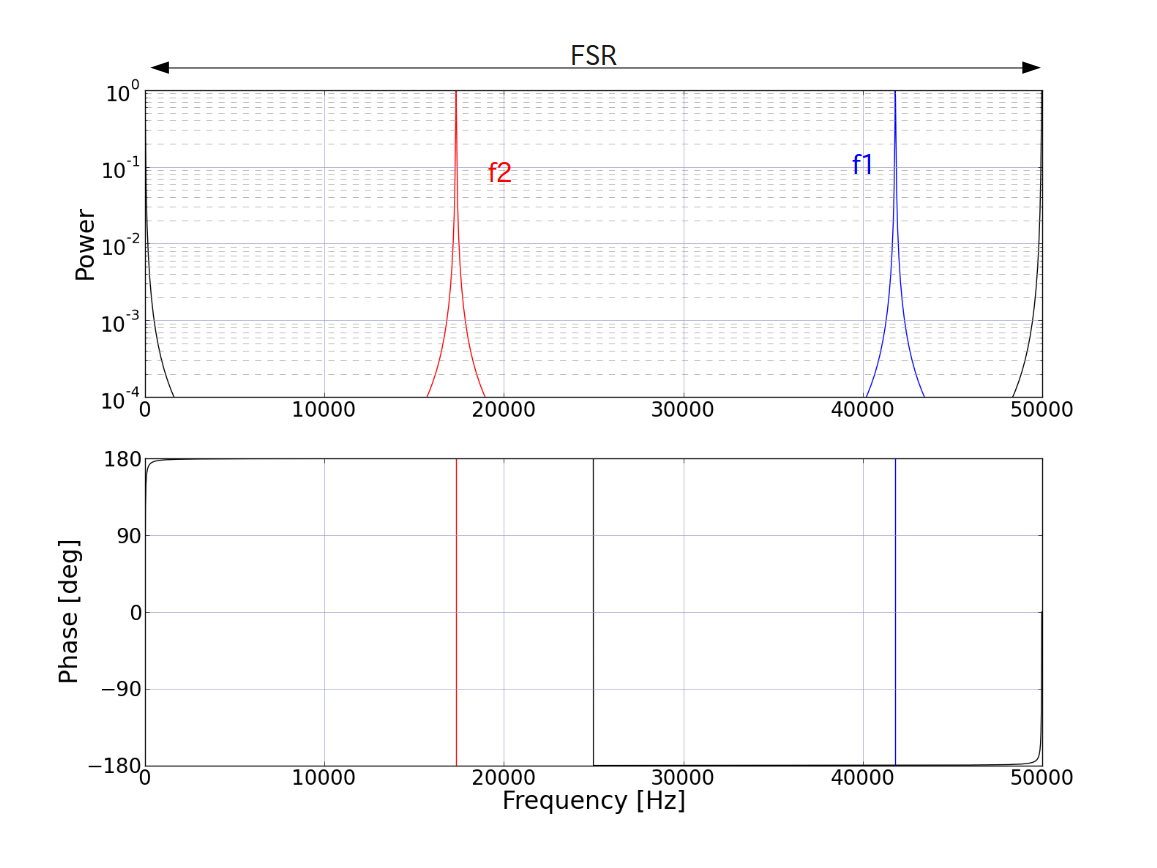|
Size: 562
Comment:
|
Size: 881
Comment:
|
| Deletions are marked like this. | Additions are marked like this. |
| Line 8: | Line 8: |
| {{attachment:ResonantCurves.png|width=400}} | {{attachment:ResonantCurves.png||width=800}} |
| Line 13: | Line 13: |
| the arm length a lot. | the arm length a lot. So what we aim for is, (1) both sidebands are sufficiently far from the resonances, and (2) both sidebands get the same phase change at the reflection. By tweaking the MC length (thus the sideband frequencies) a bit (tens of mm), we can find a suitable sideband frequencies which satisfies the above criteria. |
Arm Cavity Design
RF Sideband resonance in the arm cavities
We have to avoid RF sidebands to be resonant in the arm cavities. For example, canonical parameters (L=3000.0, f1=11.25MHz) give the following resonant curves.

Only the upper sidebands are plotted here. It is clear that the two sidebands get different phase shifts when reflected by the arm cavities. It is desirable to have them both at exactly an anti-resonance. However, it is not possible unless we change the arm length a lot. So what we aim for is, (1) both sidebands are sufficiently far from the resonances, and (2) both sidebands get the same phase change at the reflection.
By tweaking the MC length (thus the sideband frequencies) a bit (tens of mm), we can find a suitable sideband frequencies which satisfies the above criteria.
